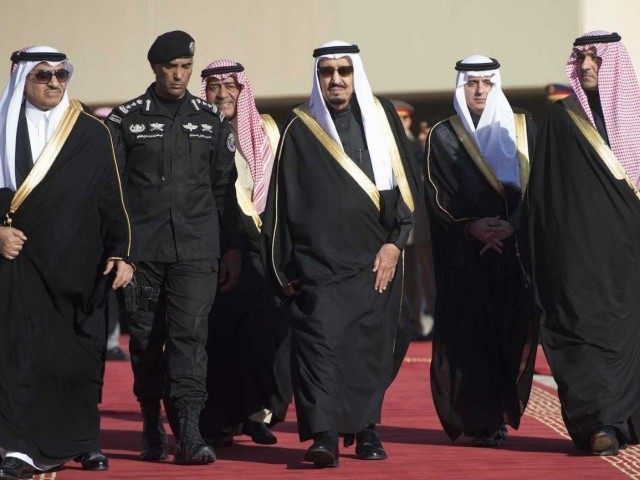Saudi Arabian cash reserves are in free-fall due to China’s economic crash driving oil prices down to an average of $45 a barrel and the Kingdom becoming the world’s third largest military spender.
When Breitbart News published ‘With China Crash, Saudi Arabia Hemorrhaging Cash,’ we received criticism for being too alarmist that the Kingdom’s foreign exchange position would fall by $130 billion from a peak of $750 billion in August 2014 to $620 billion by the end of 2015.
But Breitbart may have actually been too optimistic regarding Saudi Arabia’s cash burn. Bloomberg just reported the Kingdom’s central bank net foreign asset holdings fell in August “for a seventh month in a row to $654.5 billion, the lowest since February 2013.”
The 15,000 members of the six branches of the Saudi royal family have been buying national support with massive social welfare spending. But with a 60 percent plunge in oil prices causing a massive budget deficit, the royal family’s foreign exchange reserves could be wiped out in four years.
Saudi Arabia’s oil and gas sector makes up 45 percent of GDP, funds 80 percent of the government’s budget, and accounts for 90 percent of exports. Saudi Arabia spent $294.3 billion in 2014 and ran a -$14.4 billion deficit. The 2015 Saudi budget was cut down to $229.3 billion in spending and predicted a -$38.6 billion deficit.
With the average price of oil in June projected to be $60 a barrel for the year, the IMF estimated that Saudi Arabia’s GDP would fall from $746 billion GDP in 2014 to $644 billion and the nation would post a -$153 negative balance of payments deficit, or about 20 percent of GDP. But with international oil prices at $45 a barrel, the Saudi deficit will jump to about $175 billion and Saudi GDP will plunge by another $50 billion.
The wild card in trying to predict Saudi Arabia’s financial solvency is the nation’s military commitments. The Kingdom passed Russia in 2015 to take over the third spot in military spending with a defense budget of $80.8 billion, behind only the U.S. and China, according to IISS. But that was before invading Yemen and dramatically increasing its secret funding of Islamist groups in Syria.
Unlike other oil producers, like Russia that can hunker down and rely on their own self sufficiency for food and production, Saudi Arabia imports 70 percent of its food and does not produce military hardware, cars, refrigerators, civil airplanes, ships, or most manufactured consumer and industrial goods. Saudi Arabia’s only real domestic industry is petrochemicals.
The Saudi Arabian Kingdom is also not positioned to mandate the kind of severe austerity measures Russia has implemented. The vast majority of Saudis enjoy their standard of living due to government handouts. Saudi citizens tend to lack employable skills and are culturally not inclined to work. Of the 30 million residents, only 5.5 million work and 3 million work directly for the government. The small private sector tends to only employ foreigners.
When 80 year old Salman Bin Abdulaziz Al Saud ascended to the throne in February, he distributed $32 billion to the people to cement his popular support.
Saudi Arabia was the prime beneficiary of the 1998 to 2013 economic supercycle that saw commodity prices experience double-digit after-inflation growth. Exploding Chinese demand drove the price of oil up 1,062 percent, copper up 487 percent and corn up 240 percent, according to PIMCO.

COMMENTS
Please let us know if you're having issues with commenting.